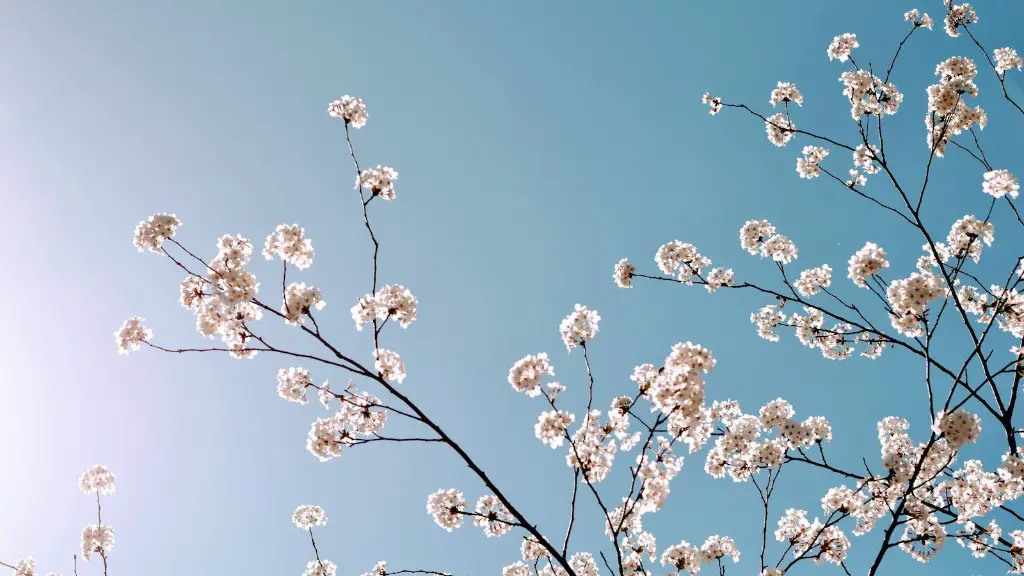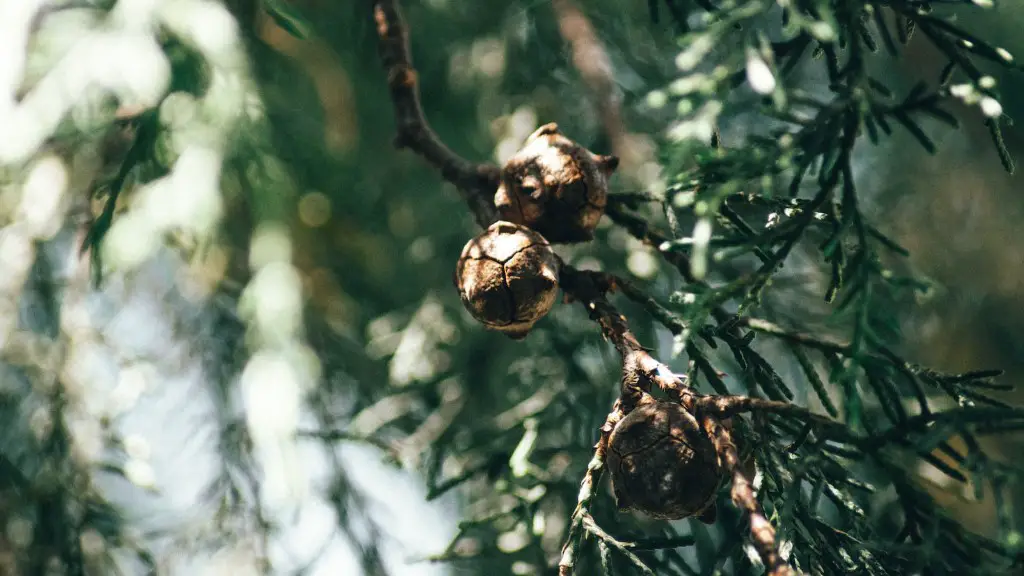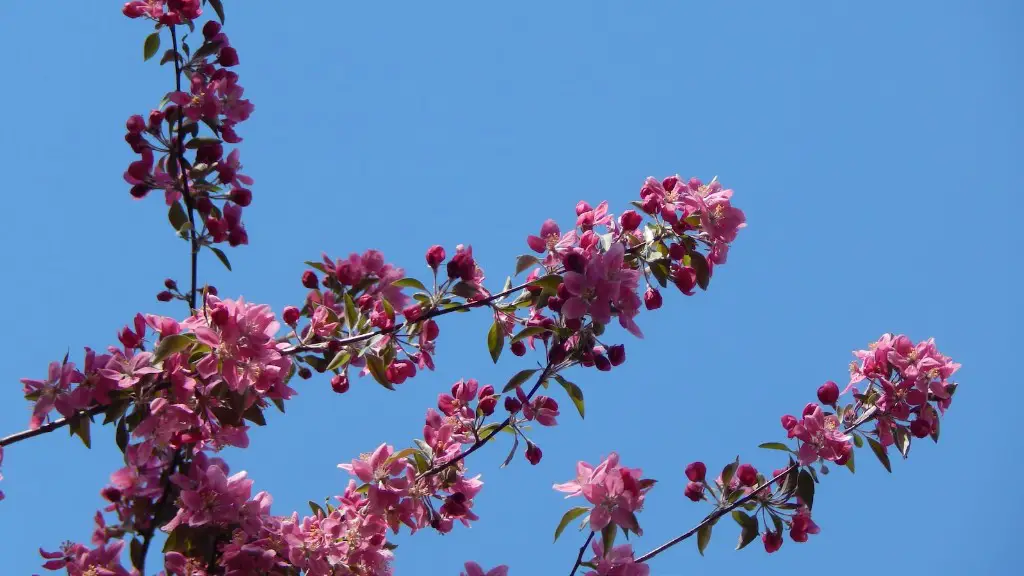Soaking The Seeds
Before planting cherry blossom tree seeds, the first step to take is to soak them. This is to ensure that the seeds will be able to germinate down the line. Soaking the seeds for a span of 24 to 48 hours will do the trick. During this period, it’s important to make sure that the temperature of the water is kept cool but not too cold. This mild temperature will cause the seeds to to open up and activate its energy.
Drying Out The Seeds
The next step is to dry the seeds out so they can be stored and planted later on. To perform this step, one should gather some paper towels and spread it out on a flat surface with the seeds lying in the middle of it. Then take another paper towel and spread it over the top of the seeds. After that, the paper towels should be set aside for 15 minutes. The purpose of doing this is to make sure that the seeds do not become moldy or seep into the ground while they are being stored.
Creating a Planting Site
In order to get the best out of the cherry blossom tree, it’s important to create a planting site that is most suitable for it. This means having some knowledge of the season and the ground. If the climate is cold or if there’s frost on the ground, it’d be best to put off planting until the time has passed. In addition to this, making sure that the site is well drained and receives adequate sunlight is also a must for a successful planting process.
Planting the Seeds
When the planting site is ready and the season is right, the seeds should be planted at least 2 inches deep in the soil and spaced out 18-24 inches apart. The soil should also be well worked to ensure there are no rocks, sticks, or other debris that might impede germination. After doing this, the seeds should be watered very lightly and fresh mulch should be applied to the planting site.
Care and Maintenance
Once the cherry blossom tree seeds are planted, there are still some steps that must be taken in order to ensure the growth and survival of the plant. First and foremost, it must receive a sufficient amount of water throughout the year. This will not only help it grow but it will also help keep away diseases and pests. Secondly, good pruning techniques should be practiced as cherry blossom trees can become overgrown if not maintained properly. By trimming off the excess branches, it will promote a healthy crown that will produce beautiful flowers each year.
Fertilizing Your Cherry Blossom Tree
Fertilizing cherry blossom trees is key in maintaining the beauty and health of the plant. It’s best to use organic fertilizer that is specifically designed for trees and shrubs. This will help ensure that all the necessary nutrients are being provided to the plant. It’s also best to fertilize at least twice per year — once in spring and once in early fall. This will give it the boost that it requires to survive and thrive.
Pests and Diseases
In order to protect the cherry blossom tree from pests and diseases, it’s important to be vigilant with examining the tree often. If any signs of an infestation are noticed, it’s best to contact an arborist for a professional diagnosis and treatment. In addition to this, mulching around the base of the tree can go a long way in protecting the roots from any damage or disease.
Mulching
Mulching is a vital practice when it comes to cultivating cherry blossom trees. A layer of mulch should be applied around the base of the tree to make sure that the soil remains moist and healthy. This will help the tree to grow stronger and provide better protection from pests, diseases, and extreme weather. It’s also important to keep in mind that mulch can build up and is best removed when it’s at least 3-4 inches thick.
Pruning
Pruning is key when it comes to cherry blossom tree gardening. Pruning will help improve the overall health and beauty of the tree. It’s important to prune the tree when the flowers are in bloom. This will ensure that the flowers will be vibrant and beautiful come the next blooming season. Another reason to prune is to encourage more blooms and make room for new growth. When pruning, it’s best to cut back the branches and remove any dead or damaged pieces from the tree.
Grafting
Grafting is an important practice for encouraging new life for cherry blossom trees. This involves taking a small branch from a well-established tree and grafting it to a living stem or root of a younger tree. This will allow the younger tree to grow and flower in the same way as its mature donor. The best season to perform grafting is late winter or early spring when the trees are dormant. The healing process should be monitored closely to make sure the grafts are successful.
Frost Protection
It’s important to protect cherry blossom trees from frost during the winter season. Frost can damage or even kill young trees and it’s best to prepare for cold weather ahead of time. One way to do so is to cover the tree with a frost blanket for extra protection. This will help keep the tree at a comfortable temperature and make sure it is able to thrive come springtime.
Transplanting Cherry Blossom Trees
Transplanting cherry blossom trees can be tricky due to its delicate root system. When transplanting, it’s important to dig a large enough hole in the new location. The soil should be well-prepared with plenty of compost and water to ensure the tree gets off to a good start. Once transplanted, the cherry blossom tree must be watered regularly and receive proper care and attention.
Pollination
For cherry blossom trees to produce fruit, they must be pollinated. This requires the presence of bees, butterflies, and other pollinators. To ensure pollinators are plentiful, one should plant a variety of flowers and plants that attract them to the area. This will help to stimulate a healthy and diverse ecosystem that is conducive to the success of the cherry blossom tree.
Harvesting Cherry Blossom Fruit
When harvesting the fruit from the cherry blossom tree, it’s important to do so when it has reached the peak of ripeness. This can be determined through physical appearance, flavor, and texture. It’s also important to not pull or twist the fruit from the tree. Instead, it should be picked or snipped off with special tools. The fruit can then be collected and used for a variety of uses.
Pruning Young Trees
When it comes to pruning young cherry blossom trees, it’s important to be patient and wait until the tree is at least 3 to 5 years old. This will give the tree more time to become established before pruning is done. When pruning, it’s best to remove any dead, diseased, or broken branches first. Afterward, cuts should be made parallel to the branch structure and the tree should be pruned in the shape of an “inverted funnel”. This will then encourage good bud development and overall health of the tree.
Winter Care
Cherry blossom trees require special care during the winter season. The most important thing to do is to make sure the tree is receiving enough water. The soil and mulch should also be kept moist at all times. It’s also important to protect the tree from extreme cold by wrapping it with protective materials. This will ensure the tree survives the harsh winter temperatures.
Pest Prevention
When it comes to protecting the cherry blossom tree from pests, it’s best to start by keeping the tree healthy. This can be done by making sure it receives the nutrients it needs, is properly watered and mulched, and has adequate sunlight. In addition to this, it’s important to check the tree often for signs of infestation. This may include spotting aphids, caterpillars, or other intrusive insects. If spotted, it’s best to contact an arborist for professional treatment.



